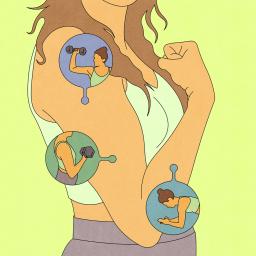 |
by Rhiannon Williams on (#70NMW)
This is today's edition ofThe Download,our weekday newsletter that provides a daily dose of what's going on in the world of technology. How do our bodies remember? Like riding a bike" is shorthand for the remarkable way that our bodies remember how to move. Most of the time when we talk about muscle memory, we're...
|
MIT Technology Review
| Link | https://www.technologyreview.com/ |
| Feed | https://www.technologyreview.com/stories.rss |
| Updated | 2025-12-13 11:34 |
 |
by Bonnie Tsui on (#70NJ4)
MIT Technology ReviewExplains: Let our writers untangle the complex, messy world of technology to help you understand what's coming next. You can readmore from the series here. Like riding a bike" is shorthand for the remarkable way that our bodies remember how to move. Most of the time when we talk about muscle memory, we're...
|
 |
by Jessica Hamzelou on (#70NJ5)
Attentive readers might have noticed my absence over the last couple of weeks. I've been trying to recover from a bout of illness. It got me thinking about the immune system, and how little I know about my own immune health. The vast array of cells, proteins, and biomolecules that works to defend us from...
|
 |
by Rhiannon Williams on (#70MS7)
This is today's edition ofThe Download,our weekday newsletter that provides a daily dose of what's going on in the world of technology. How healthy am I? My immunome knows the score. Made up of 1.8 trillion cells and trillions more proteins, metabolites, mRNA, and other biomolecules, every person's immunome is different, and it is constantly...
|
 |
by Casey Crownhart on (#70MPG)
On Monday, we published our 2025 edition of Climate Tech Companies to Watch. This marks the third time we've put the list together, and it's become one of my favorite projects to work on every year. In the journalism world, it's easy to get caught up in the latest news, whether it's a fundraising round,...
|
 |
by David Ewing Duncan on (#70MM3)
The story is a collaboration between MIT Technology Review and Aventine, a non-profit research foundation that creates and supports content about how technology and science are changing the way we live. It's not often you get a text about the robustness of your immune system, but that's what popped up on my phone last spring....
|
 |
by Rhiannon Williams on (#70KV0)
This is today's edition ofThe Download,our weekday newsletter that provides a daily dose of what's going on in the world of technology. The Trump administration may cut funding for two major direct-air capture plants The US Department of Energy appears poised to terminate funding for a pair of large carbon-sucking factories that were originally set...
|
 |
by James Temple on (#70K90)
The US Department of Energy appears poised to terminate funding for a pair of large carbon-sucking factories that were originally set to receive more than $1 billion in government grants, according to a department-issued list of projects obtained by MIT Technology Review and circulating among federal agencies. One of the projects is the South Texas...
|
 |
by Caiwei Chen on (#70K69)
Kids have always played with and talked to stuffed animals. But now their toys can talk back, thanks to a wave of companies that are fitting children's playthings with chatbots and voice assistants. It's a trend that has particularly taken off in China: A recent report by the Shenzhen Toy Industry Association and JD.com predicts...
|
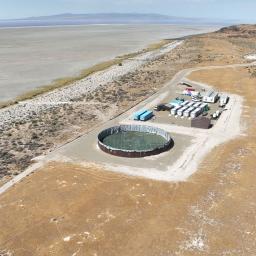 |
by Rhiannon Williams on (#70JWK)
This is today's edition ofThe Download,our weekday newsletter that provides a daily dose of what's going on in the world of technology. This company is planning a lithium empire from the shores of the Great Salt Lake On a bright afternoon in August, the shore of Utah's Great Salt Lake looks like something out of...
|
 |
by James O'Donnell on (#70JRM)
Last week OpenAI released Sora, a TikTok-style app that presents an endless feed of exclusively AI-generated videos, each up to 10 seconds long. The app allows you to create a cameo" of yourself-a hyperrealistic avatar that mimics your appearance and voice-and insert other peoples' cameos into your own videos (depending on what permissions they set)....
|
 |
by Alexander C. Kaufman on (#70JRK)
BOX ELDER COUNTY, Utah - On a bright afternoon in August, the shore on the North Arm of the Great Salt Lake looks like something out of a science fiction film set in a scorching alien world. The desert sun is blinding as it reflects off the white salt that gathers and crunches underfoot like...
|
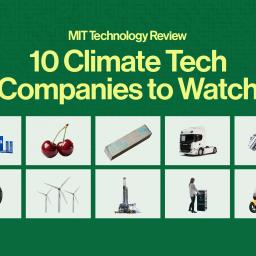 |
by Rhiannon Williams on (#70J0X)
This is today's edition ofThe Download,our weekday newsletter that provides a daily dose of what's going on in the world of technology. Introducing: 10 climate tech companies to watch Every year, the MIT Technology Review newsroom produces a list of some of the most promising climate tech firms on the planet. It's an exercise that...
|
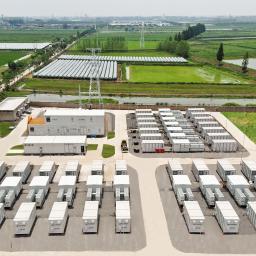 |
by You Xiaoying on (#70J14)
HiNa Battery Technology is a trailblazer in developing and mass-producing batteries using sodium, a widely available element that can be extracted from sea salt. The startup's products-already powering small vehicles and energy storage plants in China-provide a valuable alternative to lithium-based batteries, made with materials mined and processed in just a few countries. Over the...
|
 |
by James Temple on (#70J13)
MIT Technology Review's reporters and editors faced a dilemma as we began to mull nominees for this year's list of Climate Tech Companies to Watch. How do you pick companies poised to succeed in a moment of such deep uncertainty, at a time when the new Trump administration is downplaying the dangers of climate change,...
|
 |
by James Temple on (#70J12)
Climate change will make it increasingly difficult to grow crops across many parts of the world. Pairwise is leveraging CRISPR gene editing to develop plants that can better withstand adverse conditions. Pairwise uses cutting-edge gene editing to produce crops that can withstand increasingly harsh climate conditions, helping to feed a growing population even as the...
|
 |
by Casey Crownhart on (#70J11)
Cement is one of the most used materials on the planet, and the industry emits billions of tons of greenhouse gasses annually. Cemvision wants to use waste materials and alternative fuels to help reduce climate pollution from cement production. Today, making cement requires crushing limestone and heating it to super high temperatures, usually by burning...
|
 |
by Amy Nordrum on (#70J10)
As Europe gradually phases out heavy-duty diesel trucks, Traton is gearing up production of its electric models. The company is also helping to install hundreds of public chargers to aid the growth of electric freight transport across Europe. Every day, trucks carry many millions of tons of cargo down roads and highways around the world....
|
 |
by Nilesh Christopher on (#70J0Z)
More than 70% of the 200 million registered vehicles in India are two-wheelers. Ather Energy builds e-scooters for the rising middle class that could help commuters ditch highly-polluting, gas-guzzling models. While sales of Tesla or BYD cars drove electric vehicle adoption elsewhere in the world, two-wheelers have led the green energy transition in India. As...
|
 |
by Maddie Stone on (#70J0Y)
Rare earth magnets are essential for clean energy, but only a tiny fraction of the metals inside them are ever recycled. Cyclic Materials aims to change that by opening one of the largest rare earth magnet recycling operations outside of China next year. By collecting a wide range of devices and recycling multiple metals, the...
|
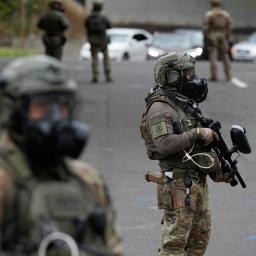 |
by Eileen Guo on (#70HZ6)
People over Papers, a crowd-sourcing project that maps sightings of immigration agents, was taken offline yesterday by Padlet, the collaborative bulletin board platform on which it was built. It's just the latest ICE-tracking initiative to be pulled by tech platforms in the past few days. A Padlet customer service representative told Celeste, one of the...
|
 |
by MIT Technology Review Insights on (#70HX7)
|
 |
by Rhiannon Williams on (#70G9S)
This is today's edition ofThe Download,our weekday newsletter that provides a daily dose of what's going on in the world of technology. Microsoft says AI can create zero day" threats in biology A team at Microsoft says it used artificial intelligence to discover a zero day" vulnerability in the biosecurity systems used to prevent the...
|
 |
by Antonio Regalado on (#70FSV)
A team at Microsoft says it used artificial intelligence to discover a zero day" vulnerability in the biosecurity systems used to prevent the misuse of DNA. These screening systems are designed to stop people from purchasing genetic sequences that could be used to create deadly toxins or pathogens. But now researchers led by Microsoft's chief...
|
 |
by Rhiannon Williams on (#70FE9)
This is today's edition ofThe Download,our weekday newsletter that provides a daily dose of what's going on in the world of technology. EV tax credits are dead in the US. Now what? Federal EV tax credits in the US officially came to an end yesterday. Those credits, expanded and extended in the 2022 Inflation Reduction...
|
 |
by Casey Crownhart on (#70FCE)
On Wednesday, federal EV tax credits in the US officially came to an end. Those credits, expanded and extended in the 2022 Inflation Reduction Act, gave drivers up to $7,500 in credits toward the purchase of a new electric vehicle. They've been a major force in cutting the up-front costs of EVs, pushing more people...
|
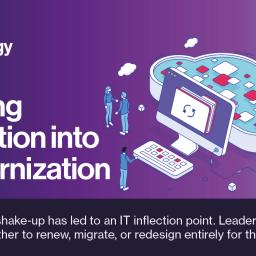 |
by MIT Technology Review Insights on (#70FAB)
In late 2023, a long-trusted virtualization staple became the biggest open question on the enterprise IT roadmap. Amid concerns of VMware licensing changes and steeper support costs, analysts noticed an exodus mentality. Forrester predicted that one in five large VMware customers would begin moving away from the platform in 2024. A subsequent Gartner community poll...
|
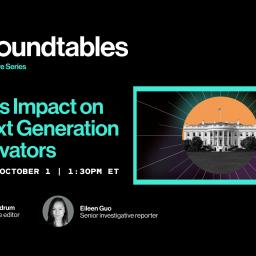 |
by MIT Technology Review on (#70F25)
Every year, MIT Technology Review recognizes dozens of young researchers on our Innovators Under 35 list. We checked back in with recent honorees to seehow they're faring amid sweeping changesto science and technology policy within the US. Learn about the complex realities of what life has been like for those aiming to build their labs...
|
 |
by Dave Grow on (#70EPW)
Talk of AI is inescapable. It's often the main topic of discussion at board and executive meetings, at corporate retreats, and in the media. A record 58% of S&P 500 companies mentioned AI in their second-quarter earnings calls, according to Goldman Sachs. But it's difficult to walk the talk. Just 5% of generative AI pilots...
|
 |
by Rhiannon Williams on (#70EK7)
This is today's edition ofThe Download,our weekday newsletter that provides a daily dose of what's going on in the world of technology. OpenAI is huge in India. Its models are steeped in caste bias. Caste bias is rampant in OpenAI's products, including ChatGPT, according to an MIT Technology Review investigation. Though CEO Sam Altman boasted...
|
 |
by Nilesh Christopher on (#70EGG)
When Dhiraj Singha began applying for postdoctoral sociology fellowships in Bengaluru, India, in March, he wanted to make sure the English in his application was pitch-perfect. So he turned to ChatGPT. He was surprised to see that in addition to smoothing out his language, it changed his identity-swapping out his surname for Sharma," which is...
|
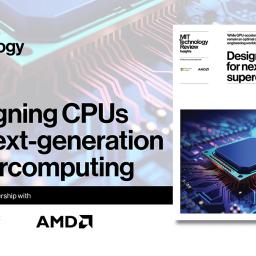 |
by MIT Technology Review Insights on (#70DQX)
In Seattle, a meteorologist analyzes dynamic atmospheric models to predict the next major storm system. In Stuttgart, an automotive engineer examines crash-test simulationsfor vehicle safetycertification. And in Singapore, a financial analystsimulates portfolio stress teststo hedge against globaleconomic shocks. Each of these professionals-and the consumers, commuters, and investors who depend on their insights- relies on a...
|
 |
by MIT Technology Review Insights on (#70DQY)
For all the excitement around GPUs-the workhorses of today's AI revolution-the central processing unit (CPU) remains the backbone of high-performance computing (HPC). CPUs still handle 80% to 90% of HPC workloads globally, powering everything from climate modeling to semiconductor design. Far from being eclipsed, they're evolving in ways that make them more competitive, flexible, and...
|
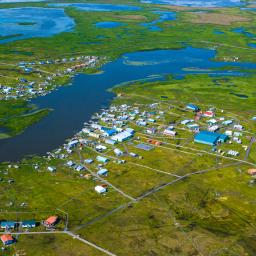 |
by Rhiannon Williams on (#70DMD)
This is today's edition ofThe Download,our weekday newsletter that provides a daily dose of what's going on in the world of technology. Scientists can see Earth's permafrost thawing from space Something is rotten in the city of Nunapitchuk. In recent years, sewage has leached into the earth. The ground can feel squishy, sodden. This small...
|
 |
by James O'Donnell on (#70DGA)
On Thursday, I published a story about the police-tech giant Flock Safety selling its drones to the private sector to track shoplifters. Keith Kauffman, a former police chief who now leads Flock's drone efforts, described the ideal scenario: A security team at a Home Depot, say, launches a drone from the roof that follows shoplifting...
|
 |
by Sarah Scoles on (#70DG9)
Something is rotten in the city of Nunapitchuk. In recent years, a crack has formed in the middle of a house. Sewage has leached into the earth. Soil has eroded around buildings, leaving them perched atop precarious lumps of dirt. There are eternal puddles. And mold. The ground can feel squishy, sodden. This small town...
|
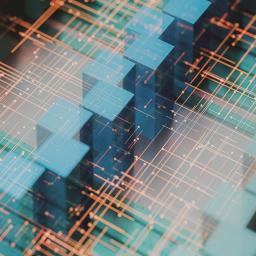 |
by MIT Technology Review Insights on (#70DG8)
|
 |
by Rhiannon Williams on (#70CQ1)
This is today's edition ofThe Download,our weekday newsletter that provides a daily dose of what's going on in the world of technology. US investigators are using AI to detect child abuse images made by AI Generative AI has enabled the production of child sexual abuse images to skyrocket. Now the leading investigator of child exploitation...
|
 |
by Casey Crownhart on (#70CNC)
The need to cut emissions and adapt to our warming world is growing more urgent. This year, we've seen temperatures reach record highs, as they have nearly every year for the last decade. Climate-fueled natural disasters are affecting communities around the world, costing billions of dollars. That's why, for the past two years, MIT Technology...
|
 |
by James O'Donnell on (#70B72)
Generative AI has enabled the production of child sexual abuse images to skyrocket. Now the leading investigator of child exploitation in the US is experimenting with using AI to distinguish AI-generated images from material depicting real victims, according to a new government filing. The Department of Homeland Security's Cyber Crimes Center, which investigates child exploitation...
|
 |
by Charlotte Jee on (#70AXK)
Shoplifters in the US could soon be chased down by drones The news: Flock Safety, whose drones were once reserved for police departments, is now offering them for private-sector security, the company has announced. Potential customers include businesses trying to curb shoplifting. How it works: If the security team at a store sees shoplifters leave,...
|
 |
by James O'Donnell on (#70A78)
Flock Safety, whose drones were once reserved for police departments, is now offering them for private-sector security, the company announced today, with potential customers including businesses intent on curbing shoplifting. Companies in the US can now place Flock's drone docking stations on their premises. If the company has a waiver from the Federal Aviation Administration...
|
 |
by Jacob Judah on (#709WA)
When Kenneth Wehr started managing the Greenlandic-language version of Wikipedia four years ago, his first act was to delete almost everything. It had to go, he thought, if it had any chance of surviving. Wehr, who's 26, isn't from Greenland-he grew up in Germany-but he had become obsessed with the island, an autonomous Danish territory,...
|
 |
by MIT Technology Review on (#709DP)
Conversations around birth control usually focus on women, but Kevin Eisenfrats, one of the MIT Technology Review 2025 Innovators Under 35, is working to change that. His company, Contraline, is working towardtesting new birth control options for men. Speakers: Kevin Eisenfrats, co-founder and CEO of Contraline, andAmy Nordrum, executive editor, MIT Technology Review Recorded on...
|
 |
by Charlotte Jee on (#70918)
This is today's edition ofThe Download,our weekday newsletter that provides a daily dose of what's going on in the world of technology. It's surprisingly easy to stumble into a relationship with an AI chatbot The news: The first large-scale computational analysis of the Reddit community r/MyBoyfriendIsAI, which is dedicated to discussing AI relationships, found that...
|
 |
by Cassandra Willyard on (#70919)
MIT Technology Review Explains: Let our writers untangle the complex, messy world of technology to help you understand what's coming next. You can read more from the series here. At a press conference on Monday, President Trump announced that his administration was taking action to address the meteoric rise in autism." He suggested that childhood...
|
 |
by The Editors on (#708X8)
Separating AI reality from hyped-up fiction isn't always easy. That's why we've created the AI Hype Index-a simple, at-a-glance summary of everything you need to know about the state of the industry. Millions of us use chatbots every day, even though we don't really know how they work or how using them affects us. In...
|
 |
by Rhiannon Williams on (#708X9)
It's a tale as old as time. Looking for help with her art project, she strikes up a conversation with her assistant. One thing leads to another, and suddenly she has a boyfriend she's introducing to her friends and family. The twist? Her new companion is an AI chatbot. The first large-scale computational analysis of...
|
 |
by MIT Technology Review on (#708F9)
Every year, MIT Technology Review selects one individual whose work we admire to recognize as Innovator of the Year. For 2025, we chose Sneha Goenka, who designed the computations behindthe world's fastest whole-genome sequencing method. Thanks to her work, physicians can now sequence a patient's genome and diagnose a genetic condition in less than eight...
|
 |
by Charlotte Jee on (#7082X)
This is today's edition ofThe Download,our weekday newsletter that provides a daily dose of what's going on in the world of technology. AI models are using material from retracted scientific papers The news:Some AI chatbots rely on flawed research from retracted scientific papers to answer questions, according to recent studies. In one such study, researchers...
|